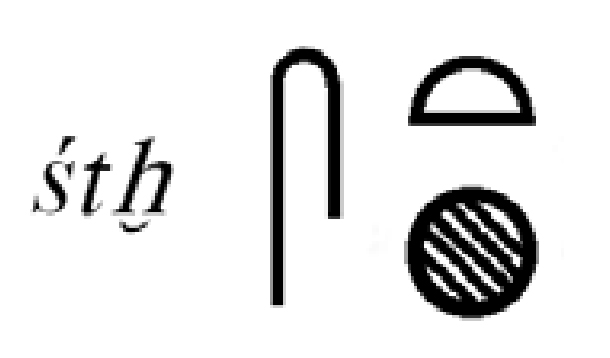
Monday, May 28, 2018
New Set Sightings
1:35pm

Monday, May 28, 2018
New Set Sightings
1:35pm
|
Yes, we have new Set sightings, to which I've applied some investigative efforts, We have new photos of the relief from the temple of Amon at Hibis in the Khargas oasis, which features a falcon-headed Set giving the serpent (which is uncreated, always existing, and with only one terrible desire, to return everything in creation to a state of non-existence) a blow to spare all of creation from this awful fate. How do we know it is Set that is featured and not one of the many Horus deities? It is because of the identifying glyphs in the upper right. Previously, I lacked a photo good enough to see this important detail. Now we do!
 (See rest of name spelling variations in the pdf under this link I encountered another one of the name variations for the god Set in Maj Sandman Holmberg's _The God Ptah_: "Rameses III also erected buildings within the temple-area of Ptah, but of these we have no archaeological remains. We know of them, however, through contemporary Egyptian texts."
One of these mysterious missing temples included one to the god Set (aka "Sutekh"). Gardiner thought that one mention of a missing temple The number "273" refers to an illustration of the hieroglyphs in the back of the book:
It's quite tricky when the spellings are so variable. However, it's kept rather simple in Unas' pyramid. This pharaohs's artists just used the Set animal:
I was very keen to learn more about this almost solo hieroglyph. I did learn it is on the north wall of the sarcophagus chamber. I tried to line up the glyphs with the provided translation, but wasn't able to come to an adequate surmise. I wasn't about to figure out the phrase for the following Set glyph, either. But I did determine it is on the sarcophagus chamber's south side. Perhaps it is from "Utterance 215", but that mentions Set several times and I was able to find only the one hieroglyph. Of course, the writer may be referring to Set using other hieroglyphs.
The following photo is from the antechamber:
I'm not certain, but this may be from "Utterance 305", in which Unas and the gods talk:
I'm thinking this may be correct, because a "Ra" hieroglyph appears so soon after that of Set. I had more certainty tracking down the Set hieroglyph in Heidi Kontkanen's photo:
And I was able to track down the phrase from which it comes! Vincent Brown uses a translation which calls the larger section from which this phrase comes "Utterance 308":
Neheb-kau is the name of the deity, while "assigning of Kas" is his role. I have more Set sightings to come, including a stele featuring Ramses I and a stele with Hathor and Set! But I will share those another day, hopefully soon! |
Go Forward...
Go Back to Archives...
Go Back to Main Journal Index Page...
Go to Index of Joan's pages...
![]()
© Joan Ann Lansberry